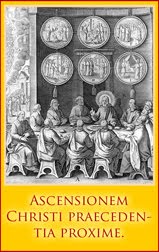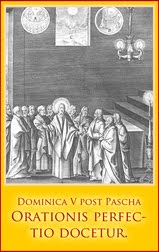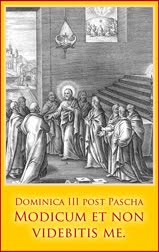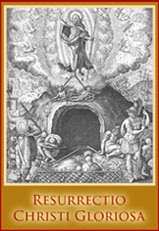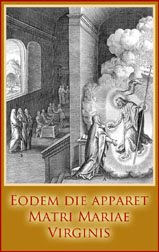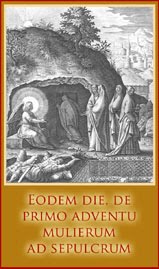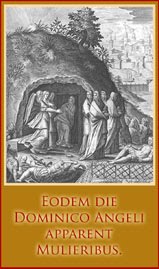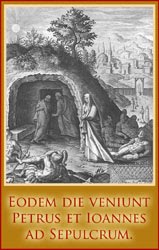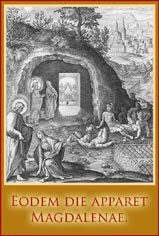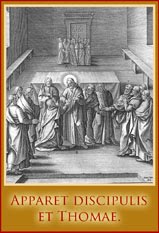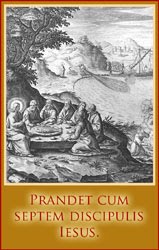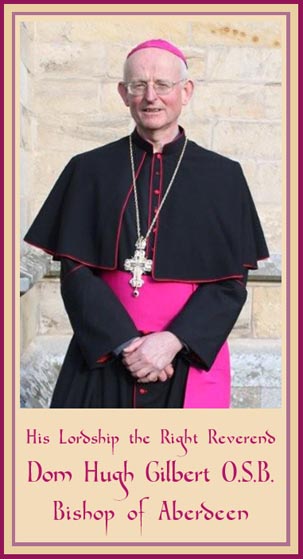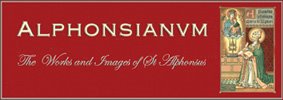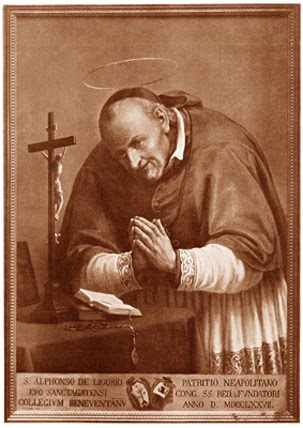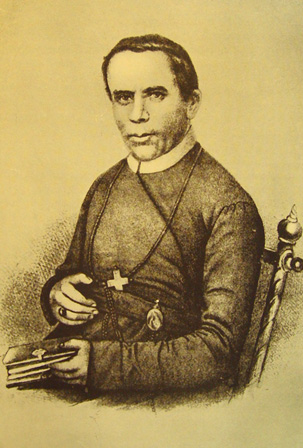The holy season of Christmas opens to our meditation the mysteries that perhaps we accept too blindly. Forming, as they do, the foundation of our Holy Faith, they should be known to some degree by all Catholics. As a young boy, I remember enquiring about certain points of the Faith; what they were exactly I no longer recall; but the answer to my many questions I remember well, it was always the same, it is still present to me:
It seemed to mean that I should abandon my questions and accept the fact blindly. Believe heartily but without understanding. This I did and often.
In conflicts about the sacred mysteries of the Virgin Birth of the Saviour and the Perpetual Virginity of the Mother of God I defended the truth with the solitary defence:
It’s a mystery. There must still be many Catholics in that situation. Believing, indeed; having Faith, yes; but not being able to sound anything of the mystery except that it is a mystery. No, Faith seeks to understand, and something can be understood of the mysteries that are beyond our grasp, not perhaps very much in this life, but at least enough for us to be in admiration and reverential awe of God’s mysteries;
now through a glass in a dark manner; but then face to face.
(1 Cor 13:12).Some years ago, reading an old book, I came across a beautiful explanation of the sacred Christmas mysteries. The preacher was speaking of the two nativities of the Son of God: the first in Eternity as the Only Begotten Son of the Father, and the second, at Christmas when he was born of the Virgin Mary. After the
Ave Maria the preacher addressed his listeners:
I wish to explain to you the marvels of these two births by a comparison so clear and understandable, such that if you do not understand it there will be nothing in the whole world that could make you understand these mysteries. Among all the purely material creatures, none is a better image of God than the Sun.
The sun is the Father of its ray.
1. You see that the sun produces a ray which is like its child; there is nothing more visible than the sun producing its ray, there is nothing more clear, nothing more bright and shining; and nothing more visible than the ray coming from, emanating from the sun; and nevertheless, there is nothing that is so difficult for us to see; we cannot look at it fixedly, not through lack of light, but through excessive brightness and by the debility of our eyes, the inability of our sight; thus, the Son of God is begotten of the Father,
in splendoribus sanctorum, In the brightness of the saints,
(Psalm 109) in the light of His Divinity by way of knowledge and science; there is nothing more intelligible than this generation, and all the same, there is so little we can understand about it: it is darkness for us because of the weakness of our comprehension.
He is from eternity like Him.
2. Again while the ray is as the child of the sun, being produced and emanating from it, even so, the ray is just as old as the sun, and if the sun were eternal, its ray would be equally eternal: thus again, while Jesus according to His Divinity, is the Son of God the Father, according to His Divinity, He is nevertheless as old as His Father, He is always like Him: He is from eternity like Him; He is without beginning like Him.
Through Him.
3. The Sun by its beam makes the earth fertile, it warms the air, and forms here below the metals and the minerals: thus the Father through the Son has created the heavens and the earth, men and angels and does all His works through His Son.
Omnia per ipsum facta sunt, all things were made by Him (St. John 1:3).
The splendour of His Father.
4. The sun produces its beam without loss to its substance, it loses nothing in giving the beam its being; on the contrary, the brightness, the beauty and the ornament of the sun is its sunbeam: thus the Son of God is the splendour of the Father and the figure of His substance. It is a very great perfection of the Father, to beget a Son who is God like Him and one same God with Him.
He leaves without having gone.
5. Next, the ray leaves the sun and is sent here below; yet it leaves without having gone; it is here below, and, all the same, it dwells above. You see the sunbeam in the sun and you see it also on the earth. Thus when the Faith teaches us that the Son of God came down from Heaven and came into the world, that is not to say that He left the bosom of the Father; He always remains there and comes to earth without ever leaving heaven.

6. Now the ray of sun comes in through the red glass window of a beautiful church: How does light pass into the glass? I don’t know. How did it come out of the glass? I don’t know. But as much as it goes into the glass so much does it come out from it. The ray enters the red glass window without opening it and it leaves it without breaking it. The ray passes through the coloured glass without affecting it, without breaking it, without ruining it at all. Thus, the Son of God has come into the world, and has passed through the the womb of the Blessed Virgin Mary. How was He conceived? I do not know. How did he come to be born? I do not know. But the fact is that He was conceived and born without opening, without breaking, without affecting the virginal womb.
Virginity made brighter.
7. Even more, the sunlight passing through the stained-glass made it more beautiful, clear, and sparkling: thus Jesus passing through the womb of Mary made Her Virginity more pure, holy and sacred.
The Virgin clothed Him with our human nature.
8. What therefore did this sunbeam do in the red stained-glass? It borrowed a little red colour, it became coloured; the stained-glass covered it with the colour of red. And what did Jesus in the womb of Mary? He clothed Himself in a human body which is composed of a little red earth: Adam,
means red earth.
Adam, id est terra rubra. There He is humanised, He is made man there, the Virgin clothed Him in our human nature.
Without loss.
9. The sunbeam, taking red colour from the stained glass, did not rob something from the glass, and Jesus taking from Mary our human nature, did so without any loss to Mary.
Since He entered into Mary.
10. The sunbeam, before entering the stained glass window was a sunbeam, but it was not colour nor coloured; however, since it has gone through the window and come inside the church it is a coloured sunbeam and a beaming colour, it is a colour which is a sunbeam. Thus Jesus before the Incarnation was God from all eternity, but he was not man. Now, since He entered into Mary, he is a God humanised, and a man deified, He is God who is a man, He is a man who is God.
11. The support of this red colour which appears on the church floor is the sunbeam, because this colour does not exist without the sunbeam. Thus, what is the support of the holy humanity? It is the Son of God, it has no subsistence but Him.
Only in Heaven and in the Blessed Sacrament.
12. This sunbeam, in as much as it is a sunbeam or light of the sun, is everywhere in the world; but as a coloured sunbeam it is not everywhere; it is only here and in a few other places. Jesus, as God and Son of God, is in every place; but as man he is not everywhere, He is only in Heaven and in the Blessed Sacrament.
13. Who is the father of this coloured sunbeam? It is the sun; but the sun has not produced the colour, it is true; but it has produced the sunbeam which is conjoint with the colour. And what is the mother? It is the stained-glass; but it has not produced the sunbeam? no, but it has produced the beaming colour, it has clothed the sunbeam with this robe of colour.
Who is the Father of Jesus Man-God? It is the eternal Father; He has not begotten with His substance the humanity of Jesus? no, it is true; but He has begotten from His substance the person of His Son, who is man.
Who is the Mother of this God-Man? It is Mary; She has not begotten the Divinity; no, but she has conceived the man who is God. She has clothed with our humanity, the Divinity of the Son of God.
Red sunbeams from stained glass.
14. Which is the older, this coloured sunbeam or the stained-glass?
It is the sunbeam in as much as it is the sunbeam, the child of the sun, for it existed long before the stained-glass; it is from the beginning of the world, it is just as old as the sun itself. But the sunbeam, as a coloured sunbeam, is younger than the stained-glass.
Who is older, Jesus or Mary?
Jesus as God or the Son of God is long before Mary; He is without beginning from eternity as is the Father and the Holy Ghost; but Jesus as man is younger than His Mother, because she was fifteen years old when She gave Him birth.
The Invisible made visible.
15. This sunbeam being from the sun is so brilliant and shining, that we cannot look at it, it dazzles and blinds the eyes of those who wish to look at it; but this same sunbeam, being clothed in a red colour, has come here below, and we can easily look at it.
And thus the Son of God in the bosom of His Eternal Father is invisible, indescribable, inaccessible and incomprehensible:
Who inhabiteth light inaccessible (1 Tim 6:16) but this same Son of God, clothed in our humanity and conversing with us has made Himself visible, palpable and sensible:
Which we have seen with our eyes, which we have looked upon, and our hands have handled, says St John.
St. Philip Neri
Spiritual Father of Oratorians
The zealous Missioner, then continued on to another point, but I paused to savor his exposition of these sacred mysteries now made as clear as day by his profound considerations. What added a poignant background to his words about the sun and colour, was reading that this young Oratorian priest, Father Lejeune, became blind at 35 years of age and never again saw light or colour. Born in 1592 he died in 1672. Although blind, he had been given special permission to celebrate Holy Mass; but, man of God that he was, he never used that permission and abstained from saying Mass those 45 years lest perhaps he might commit an irreverence at the altar while celebrating the Holy Mysteries. In this, his life speaks to our age!



















